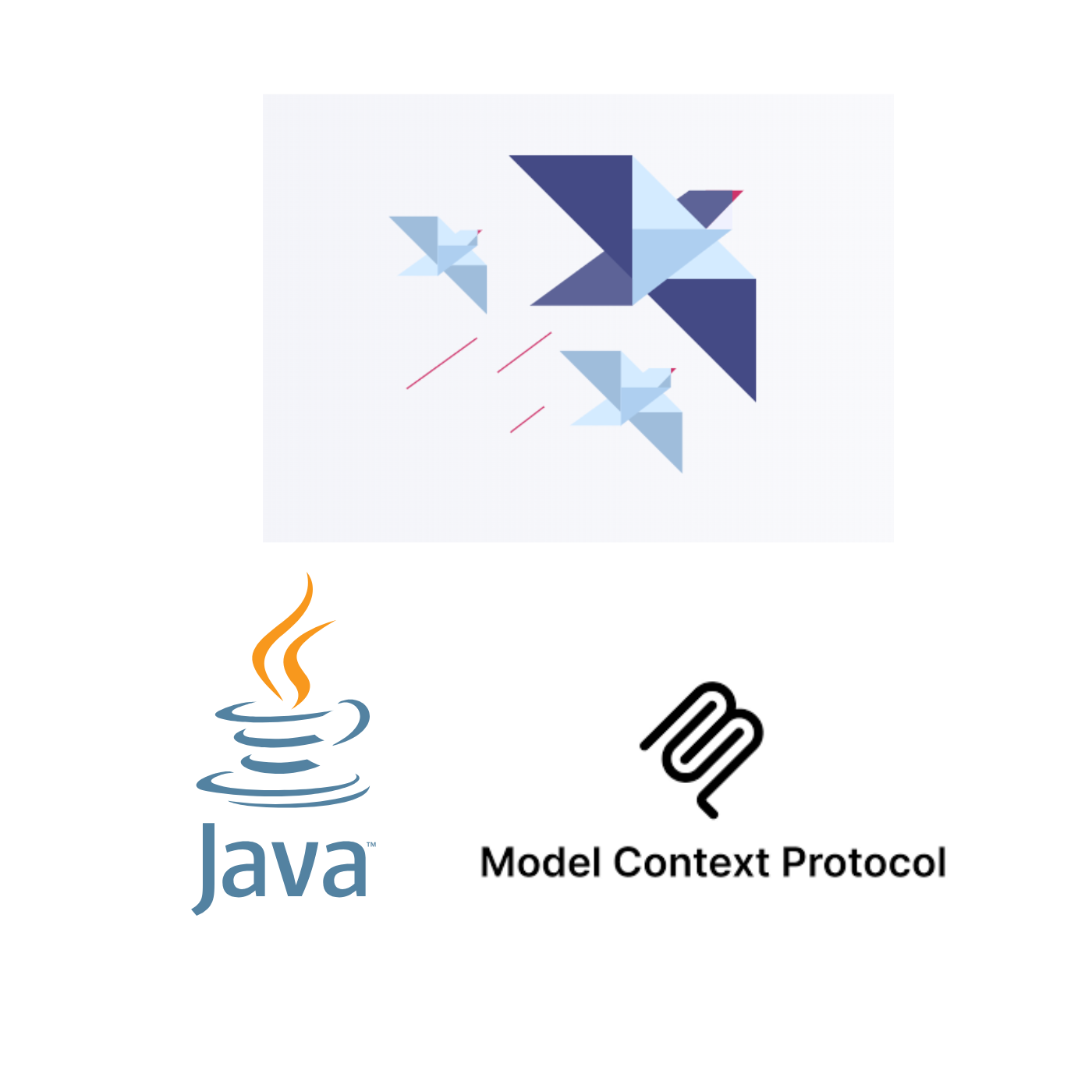Anatomy of Helidon MCP + Ollama: Designing AI-Enhanced Java Microservices
A fresh take: Java, AI, and real world APIs finally working together.
Imaging being able to build an application that fetches responses from an LLM, and all of that code is natively written in Java? A language that you can understand. Sounds interesting? At least to me, I was super excited & was jumping. It was always about Python this that and Java is not suitable for AI.
Building modern AI powered applications isn’t just about sending prompts to a model. The real magic happens when you can augment LLMs with external tools and services, like fetching live weather data. Recently, Helidon, one of my favorite java frameworks, introduced MCP servers, giving Java developers a new way to bridge LLMs with real world APIs through the Model Context Protocol. That means your AI app isn’t limited to what the model knows it can now reach out, call tools, and bring live information into the conversation.
In this blog, we’ll walk through how to wire together LangChain4j, Ollama, and Helidon to create an AI microservice that answers weather related questions. Along the way, we’ll unpack the moving parts: chat models, MCP clients, tools, and service endpoints.
🔹 High-Level Architecture - The Lego Model
We wanted to build an application that can query and fetch data from an LLM ← our Lego Model.
At a glance, our app looks like this:
User → Helidon HTTP Endpoint → LangChain4j AI Service
↳ Ollama (LLM: Qwen/Llama3/etc.)
↳ MCP Client (Weather API tool)
- Helidon → lightweight Java microservice framework
- LangChain4j → Java framework for connecting LLMs + tools
- Ollama → runs local open-source models (Qwen3, Llama3, Mistral, etc.)
- MCP (Model Context Protocol) → standard way to plug external services into AI agents
Let’s assume each of the above are lego blocks.
Connecting - The Lego Blocks
Imagine if each of these are lego blocks, each having a unique function, then attaching them will look like:
Ollama ← MCP Client ← MCP Server ← API ← UI
Process Flow of the entire application

Here’s how the runtime pieces connect:
[User Interface]
↓
[Helidon API Layer] (WeatherService + WeatherAiChat)
↓
[MCP Client] (DefaultMcpClient + HttpMcpTransport)
↓
[MCP Server] (Helidon MCP server exposing weather tool)
↓
[Ollama LLM] (Llama3/Qwen answering queries with context)
🧩 Separation of Responsibilities
Just like how each Lego block has it’s own shape, action to do (some are just dumb connectors, but let’s focus on the moving parts).
When the user calls /weather, not every layer runs at once.
Each component plays a specific role in the pipeline and the MCP Client only activates when the LLM decides a tool is needed.
🔹 Component Breakdown
1. MCP Client (mcp-client/)
Houses WeatherService.java, which wires:
- An OllamaChatModel (local LLM from Ollama at http://localhost:11434).
- An MCP Client (DefaultMcpClient) that connects to the MCP server at http://localhost:8081/mcp.
- Exposes a simple HTTP GET API so users can send queries like:
GET http://localhost:8080?question=Will it rain in Dallas tomorrow?
The WeatherAiChat interface defines the AI contract:
@SystemMessage("You are a helpful assistant that provides weather forecasts.")
String weather(@UserMessage String question);
2. MCP Server (mcp-server/ and mcp-server-declarative/)
Two flavors provided:
- Imperative (mcp-server/) → explicit server wiring via Java code.
- Declarative (mcp-server-declarative/) → YAML-driven configuration + annotated classes.
Both expose the MCP endpoint (/mcp) that the client can consume. These servers wrap external APIs (like OpenWeather or a mock weather provider) into MCP tools.
3. Ollama (Local LLM)
Runs the base model (llama3.1, qwen3:1.7b, etc.) locally. Provides the “reasoning engine” that interprets the query, decides if it needs external tools, and then integrates the MCP tool results.
4. API Layer (Helidon)
A thin HTTP service that exposes AI capabilities to the outside world. In our example, WeatherService is registered as an HttpService. The user calls:
GET /?question=Will+it+rain+in+Dallas+tomorrow
→ The system routes through MCP and Ollama → returns a natural-language answer.
5. User Interface
Could be as simple as curl, a browser, or a frontend app (React, Angular). Doesn’t care about the internal wiring just talks to the API.
🔹 Project File Structure
The typical structure of the example project. Although each of these can be a separate folder, as we run them individually.
weather-application/
├── mcp-client/
│ └── src/main/java/io/helidon/extensions/mcp/weather/server/client/
│ ├── Main.java
│ ├── WeatherAiChat.java
│ ├── WeatherService.java
│ └── package-info.java
│ └── resources/application.yaml
│
├── mcp-server-declarative/
│ └── src/main/java/io/helidon/extensions/mcp/weather/server/declarative/
│ ├── Main.java
│ ├── McpServer.java
│ └── package-info.java
│ └── resources/application.yaml
│
├── mcp-server/
│ └── src/main/java/io/helidon/extensions/mcp/weather/server/
│ ├── Main.java
│ └── package-info.java
│ └── resources/application.yaml
│
├── README.md
└── pom.xml
🔹 Module 1: MCP Client
The MCP Client is the entry point of our application. It’s responsible for:
- Bootstrapping the Helidon WebServer
- Exposing a /weather endpoint to users
- Connecting to Ollama (local LLM)
- Connecting to the MCP Server (via HTTP transport)
- Wiring everything through LangChain4j’s AI service layer
📌 Main.java
class Main {
private Main() { }
public static void main(String[] args) {
LogConfig.configureRuntime();
Config config = Config.create();
WebServer.builder()
.config(config.get("server"))
.routing(routing -> routing.register("/weather", new WeatherService()))
.build()
.start();
}
}
📌 WeatherAiChat.java
import dev.langchain4j.service.UserMessage;
import dev.langchain4j.service.V;
public interface WeatherAiChat {
@UserMessage("You are a weather journalist. ")
String weather(@V("question") String question);
}
📌 WeatherService.java
@Service.Singleton
class WeatherService implements HttpService {
private final WeatherAiChat weather;
WeatherService() {
ChatModel model = OllamaChatModel.builder()
.baseUrl("http://localhost:11434")
.modelName("llama3.1")
.timeout(Duration.ofMinutes(3))
.build();
McpTransport transport = new HttpMcpTransport.Builder()
.timeout(Duration.ofMinutes(10))
.sseUrl("http://localhost:8081/mcp")
.logRequests(true)
.logResponses(true)
.build();
McpClient mcpClient = new DefaultMcpClient.Builder()
.transport(transport)
.build();
ToolProvider toolProvider = McpToolProvider.builder()
.mcpClients(List.of(mcpClient))
.build();
this.weather = AiServices.builder(WeatherAiChat.class)
.chatModel(model)
.toolProvider(toolProvider)
.build();
}
@Override
public void routing(HttpRules rules) {
rules.get(this::weatherChat);
}
private void weatherChat(ServerRequest request, ServerResponse response) {
String question = request.query().get("question");
String answer = weather.weather(question);
response.send(answer);
}
}
📌 application.yml
This helps the MCP client to run this port.
server:
port: 8080
host: 0.0.0.0
🔹 Module 2: MCP Server (Imperative)
The MCP Server is the “toolbox” side of our app. It exposes the get-weather-alert-from-state tool that queries the National Weather Service API.
public class Main {
private static final Jsonb JSON = JsonbProvider.provider().create().build();
private static final WebClient WEBCLIENT = WebClient.builder()
.baseUri("https://api.weather.gov")
.addHeader("Accept", "application/geo+json")
.addHeader("User-Agent", "WeatherApiClient/1.0 (your@email.com)")
.build();
public static void main(String[] args) {
Config config = Config.create();
WebServer.builder()
.config(config.get("server"))
.routing(routing -> routing.addFeature(
McpServerConfig.builder()
.name("helidon-mcp-weather-server-imperative")
.addTool(tool -> tool.name("get-weather-alert-from-state")
.description("Get weather alert per US state")
.schema(createWeatherSchema())
.tool(Main::getWeatherAlertFromState))))
.build()
.start();
}
}
📌 application.yml
This helps the MCP Server to run this port.
server:
port: 8081
host: 0.0.0.0
🔹 Module 3: MCP Server (Declarative)
The Declarative MCP Server offers the same tool but with annotations instead of imperative wiring.
@Mcp.Server("helidon-mcp-weather-server")
class McpServer {
@Mcp.Tool("Get weather alert per US state")
List<McpToolContent> getWeatherAlertFromState(String state) {
// Calls api.weather.gov and returns alerts
}
}
🔹 Module 4: Demo Walkthrough

The UI, Helidon MCP Server, Helidon MCP Client, Ollama running Llama. You will need 4 terminal windows, I know they are a lot, but this is demonstrate the overall flow.
1. Run Ollama.
ollama run llama3.1
2. Build the whole weather application from the weather-application directory.
$project root> mvn clean package
3. Run MCP Server application.
java -jar mcp-server/helidon-mcp-weather-server.jar
4. In another terminal, run the MCP Client application.
java -jar mcp-client/helidon-mcp-weather-client.jar
5. Example query:
in another terminal, test the application response.
curl -G "http://localhost:8080/weather" \
--data-urlencode "question=Is there a weather alert in state TX?"
Response:
There is a Coastal Flood Advisory and High Rip Current Risk...
🔹 Summary & Key Takeaways
- MCP Client → entry point exposing /weather API, connects Ollama + MCP.
- MCP Server → provides weather tools (imperative or declarative).
- Ollama → runs the local LLM (LLaMA, Qwen, Mistral).
- Demo → queries flow User → API → MCP Client → MCP Server → Weather API → LLM → back to User.
💡 Takeaway: LangChain4j + Ollama + MCP + Helidon = a powerful recipe for AI microservices that are local, extensible, and production-ready.
Java may not be the first language people think of for AI, but that’s exactly why I’m exploring it. Follow along for more experiments, tutorials, and stories from the intersection of AI and Java development.


